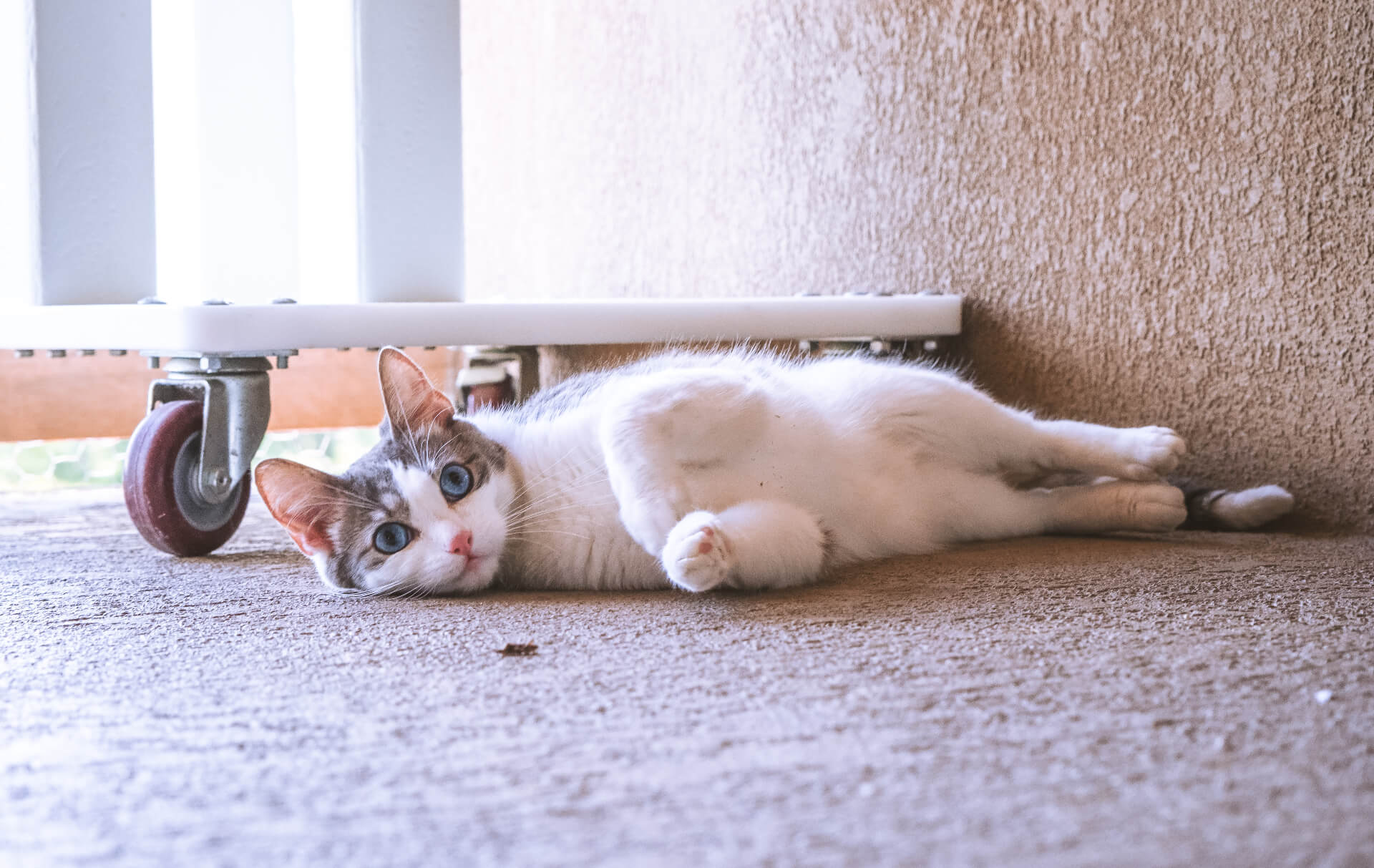
Resolving Unwanted Scratching
Scratching is a very important part of being a cat and is a natural feline behavior. Cats scratch for many reasons including: to remove the dead outer layer of the claw, to mark their territory, to stretch, and to work off energy. This normal and necessary behavior can become a problem for pet parents when a cat chooses your favorite piece of furniture to scratch. The good news is that there are a variety of things you can do to teach your cat the appropriate location to scratch.
Training Your Cat To Scratch Acceptable Objects
- Provide a scratching post – Whether it is a 6 foot tall cat tree or a cardboard scratcher on the floor, it is essential that you provide your cat or kitten with at least one appropriate place to scratch, preferably providing multiple options of varying types. As a general rule your scratching post should be long enough or tall enough to allow your cat to stretch out completely.
- Learn your cat’s preferences – All cats have preferences about the material (sisal, carpet, wood), height, and location of their scratching post. If possible, provide multiple options of varying types until you get a better sense of what your cat enjoys.
- Make it enticing! – Encourage your cat to investigate her scratching post(s) by sprinkling it with catnip or silver vine, or spray it with catnip spray. You can even use a wand toy above or next to the post.
- Location, location, location – The scratching post should be in a part of your house where your cat already likes to spend her time. Be sure that it is easily accessible to your cat from all sides so that she can stand on the floor and stretch out to scratch.
Discouraging Scratching of Unwanted Objects
- The old switcheroo – If your cat has already started to scratch on an unacceptable object, place a scratching post or board right next to where she is already scratching. Make the scratching board/post appealing with catnip and treats. Your cat has already chosen that location in the house to scratch so providing an acceptable object in that location will help her to quickly learn to scratch the post instead of that piece of furniture.
- Restrict access – If your cat has shown an affinity for scratching up a particular area, like a beloved armchair, block off your cats’ access to the chair when unsupervised by closing doors or using barriers like ex-pens or baby-gates. By preventing access to that space or object and providing other outlets nearby, your cat will likely learn to scratch appropriate objects by default.
- Use deterrents – Sometimes simply providing an acceptable object isn’t enough to get a cat to stop scratching where she has previously. If you are unable to restrict access for whatever reason, consider the use of deterrents. Remember, part of the reason for scratching is to mark territory and animals often remark the same spot over and over. You can use a variety of texture deterrents to make a formerly scratched location unappealing. Examples of textural deterrents include aluminum foil, duct tape, and double-sided tape. These are usually only needed for a short time until your cat starts to scratch on the appropriate surface. There are also sprays formulated to deter scratching, however, changing the texture of the previously scratched surface tends to be the most effective deterrent.
- Training – Many cat parents choose to train their cat not to scratch unacceptable objects using a squirt bottle or loud noise to interrupt the behavior. While this can startle your cat and interrupt the scratching, it is not a long-lasting solution because it only teaches your cat not to scratch in your presence or in the presence of the squirt bottle! Instead, focus on teaching your cat the right thing to do by rewarding her for scratching on her post with treats, catnip, or a play session. Scratching is a self-rewarding behavior so setting your cat up to succeed by providing a scratching post and using management like barriers or deterrents to discourage scratching inappropriate objects is half the battle.
Concerns About Declawing
- Declawing is a procedure where a veterinarian amputates the end digit and claw of a cat’s paw. It is an elective surgery and considered an inhumane procedure. Declawing can have unwanted side effects including chronic pain or arthritis, misuse of the litter box, and an increase in biting (as they no longer have their claws to defend themselves).
- Options to declawing include keeping cats claws trimmed or the use of products such as Soft Paws. Soft Paws are plastic caps that go over the cats claws. These humane alternatives allow the cat to keep her claws but protect your furniture or young children.
- If you must have a declawed cat due to a rental agreement or other reason, please consider adopting a cat that is already declawed.
How To Trim A Cat’s Claws
- Purchase a nail trimmer specifically designed for cats.
- Teach your cat to accept having her paws handled by giving her dollops of canned cat food while playing with her paws. Press on the pads to extend her claws and feed her treats at the same time so she is not sensitive to this handling.
- Have an assistant hold your cat while you press the pad of a paw to extend her claws. Identify the quick of the nail (the pink part at the base that houses the blood vessels) and trim the white tip of the claw above the quick. If you cut the quick it will be painful to your cat and she will bleed.
- Be patient and take your time, it may take several sessions to trim all of your cat’s claws if she is too squirmy or uncomfortable with this handling. Try to distract her with treats or petting and trim her claws when she is relaxed as opposed to in a playful mood. If your cat is particularly difficult to handle, consult your veterinarian for tips.
